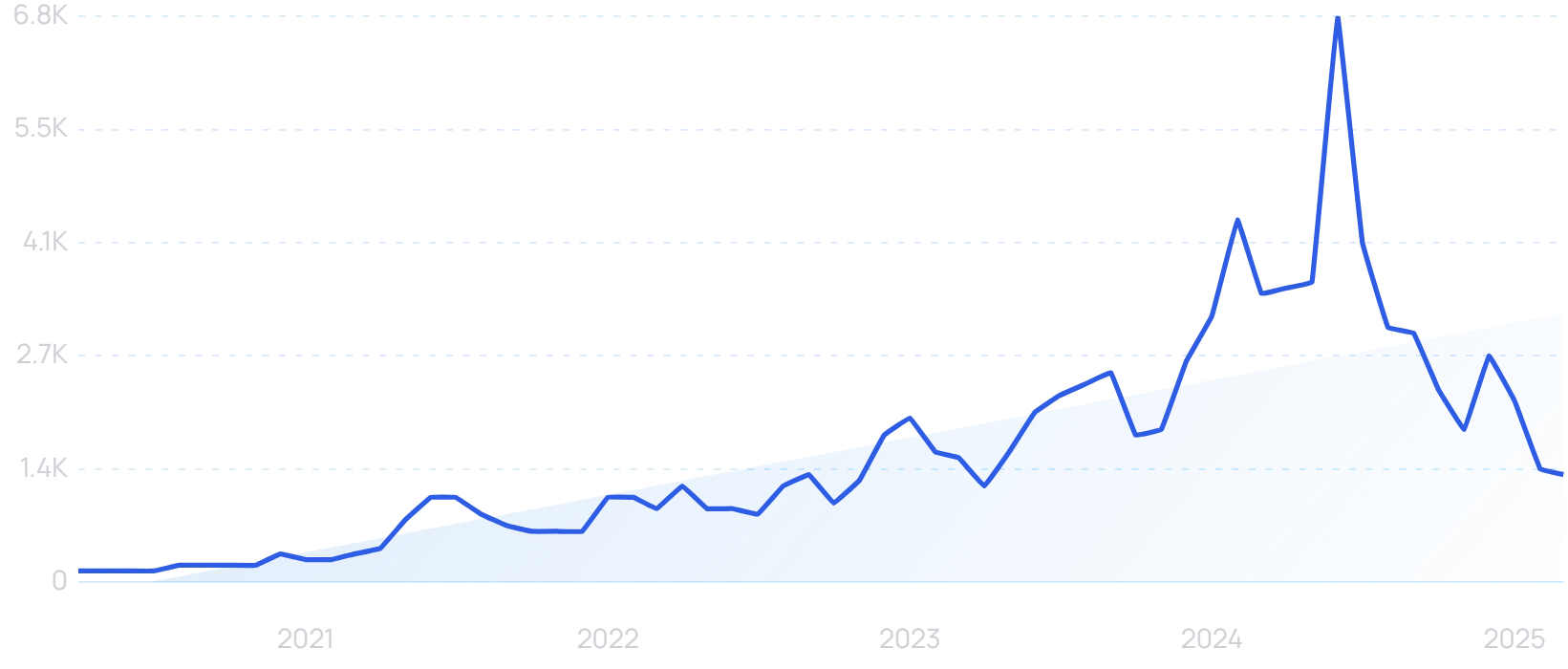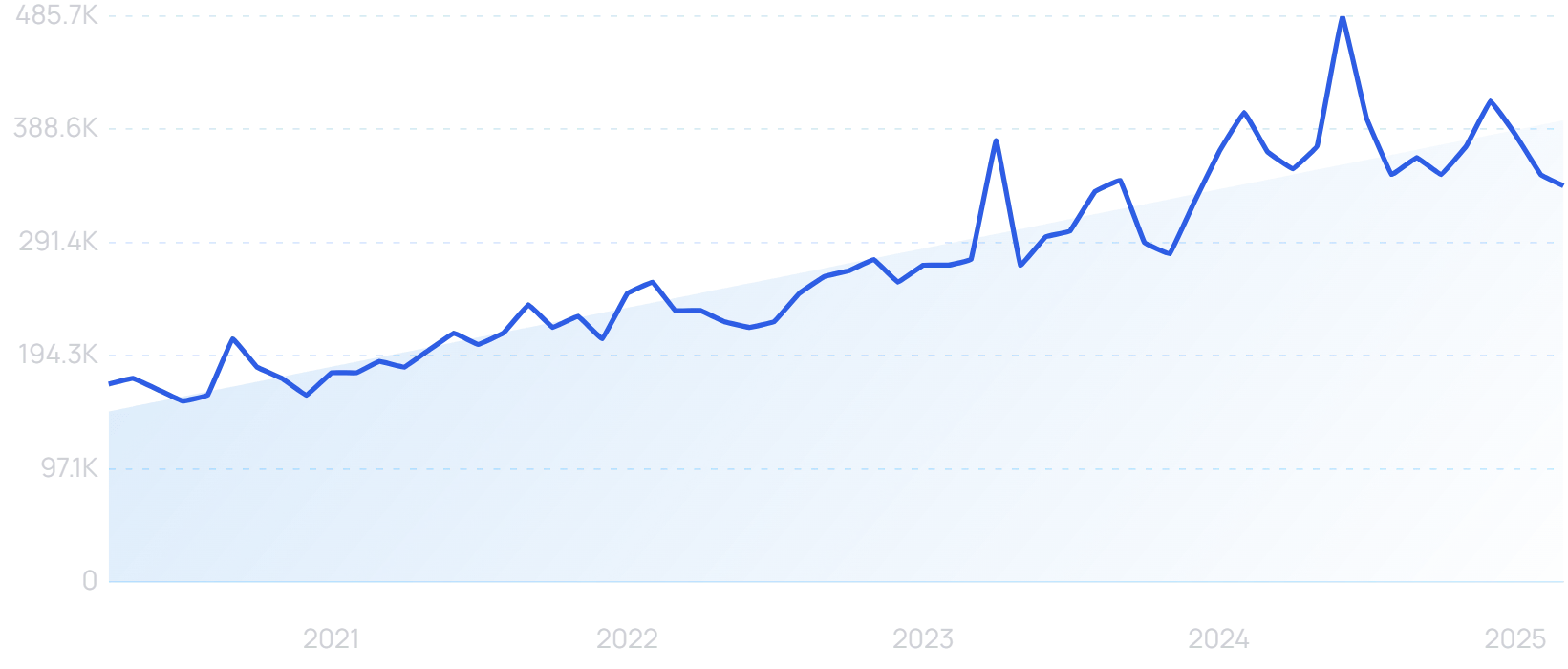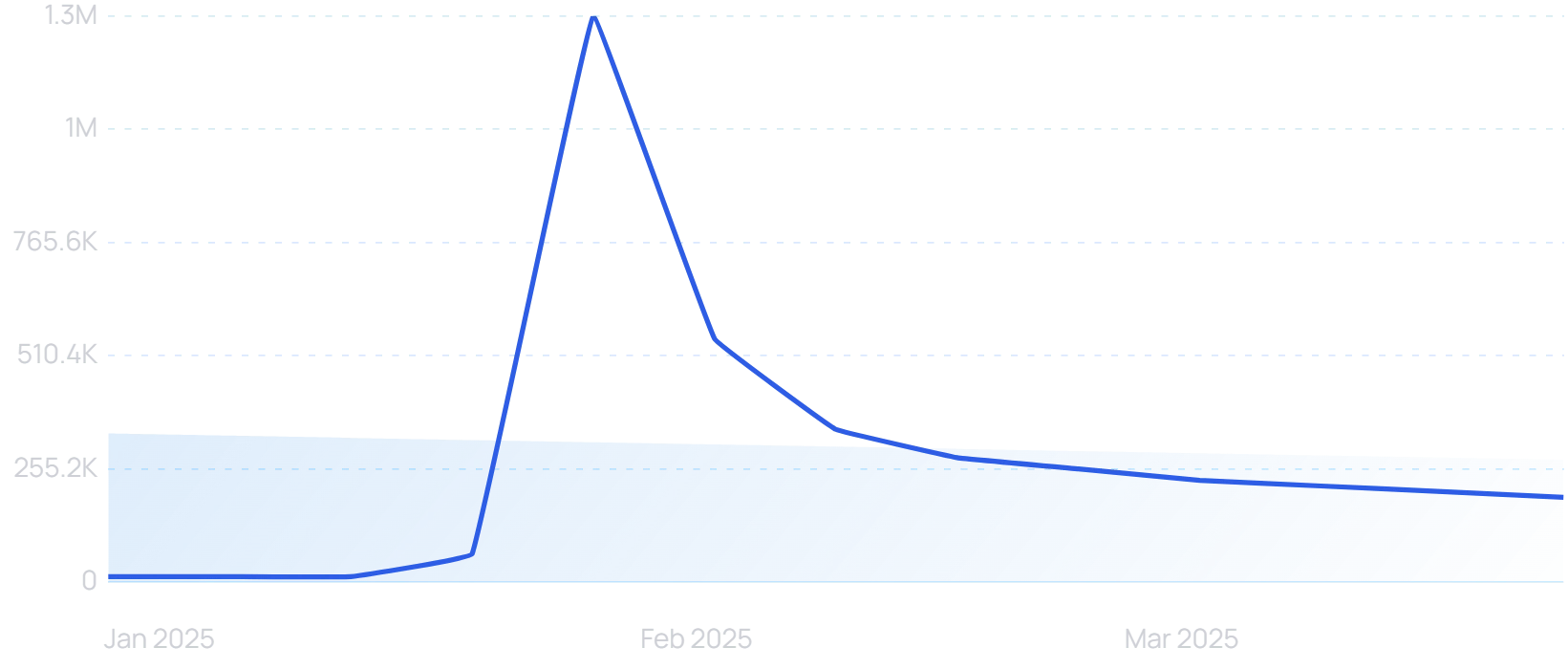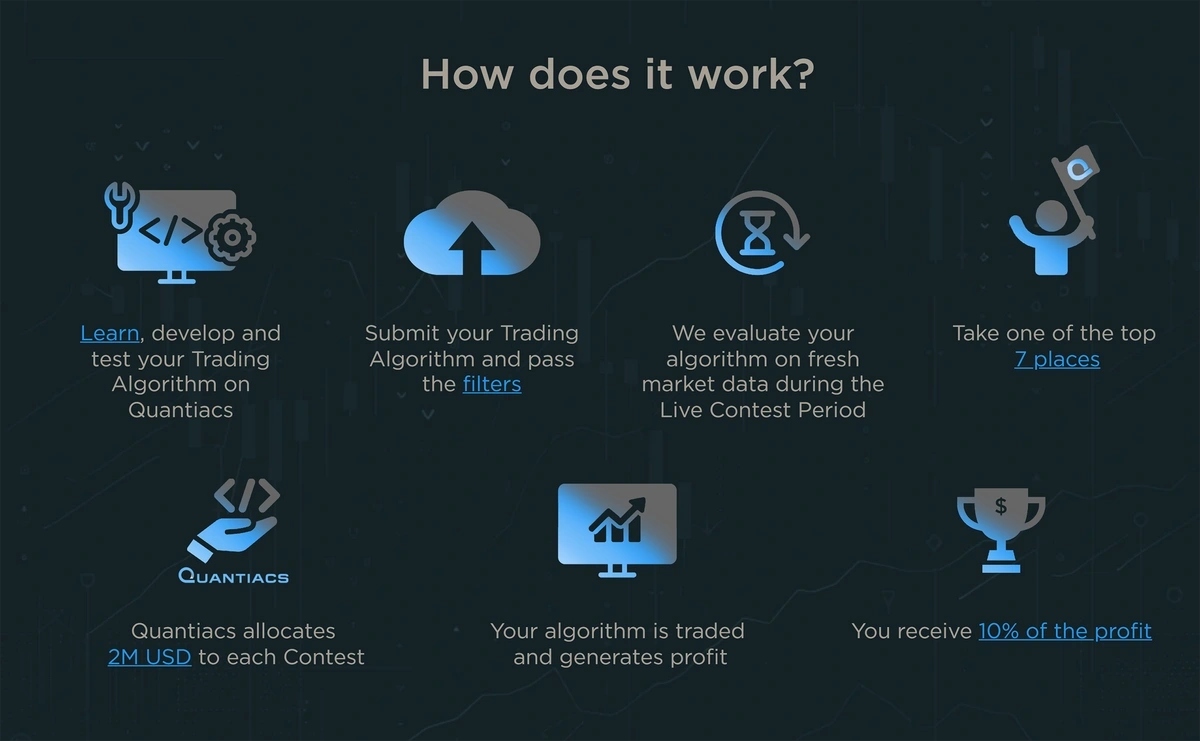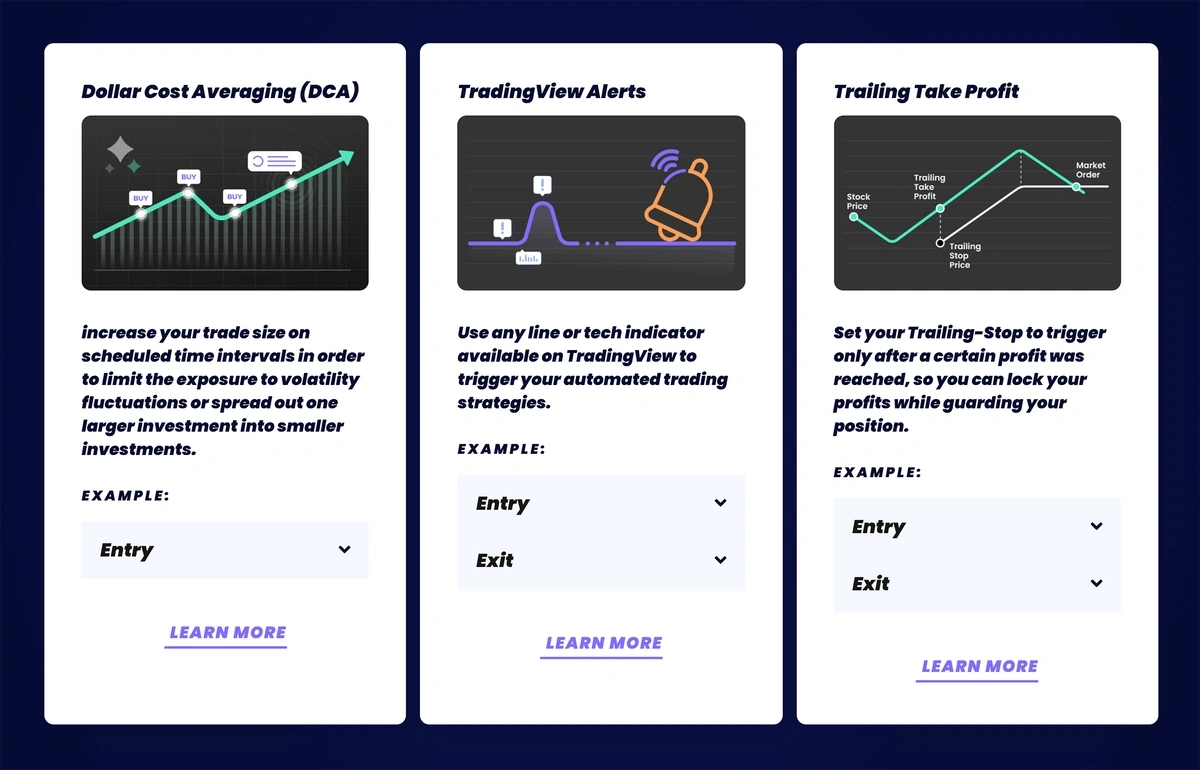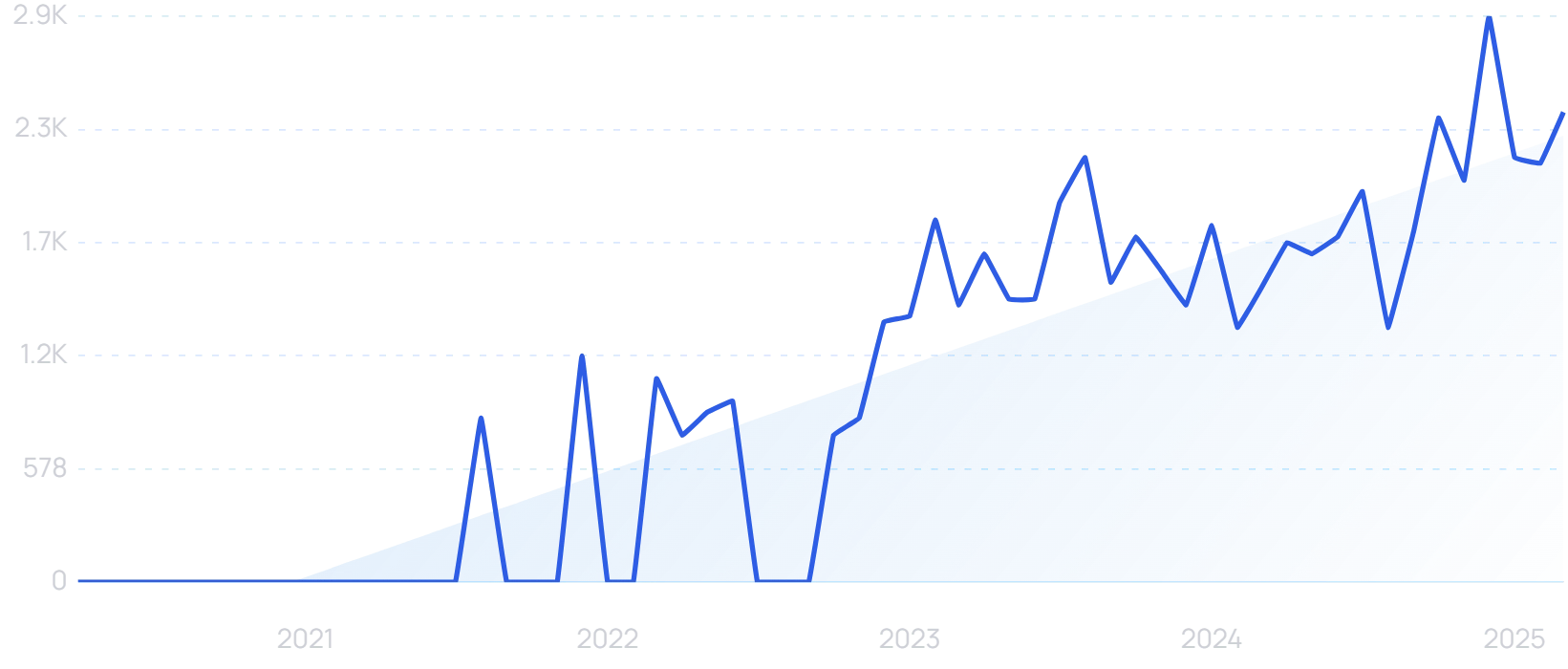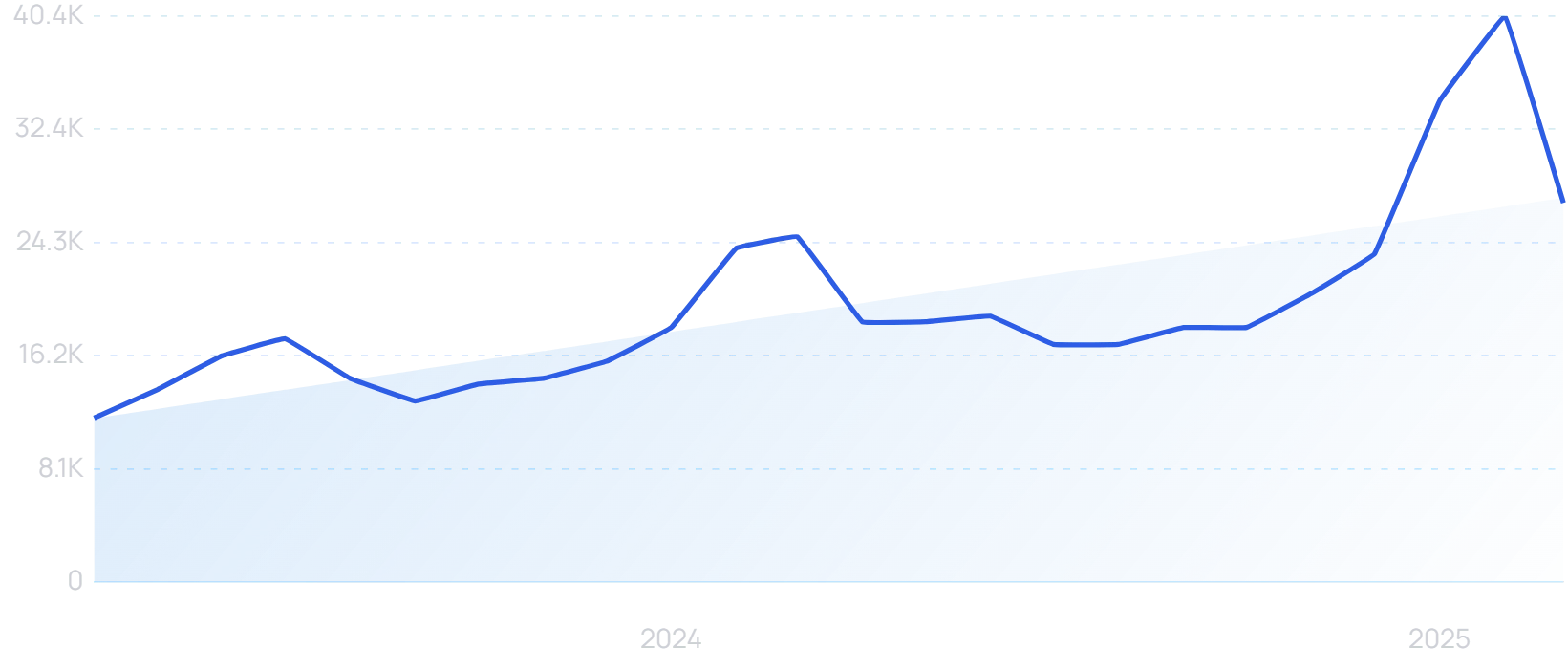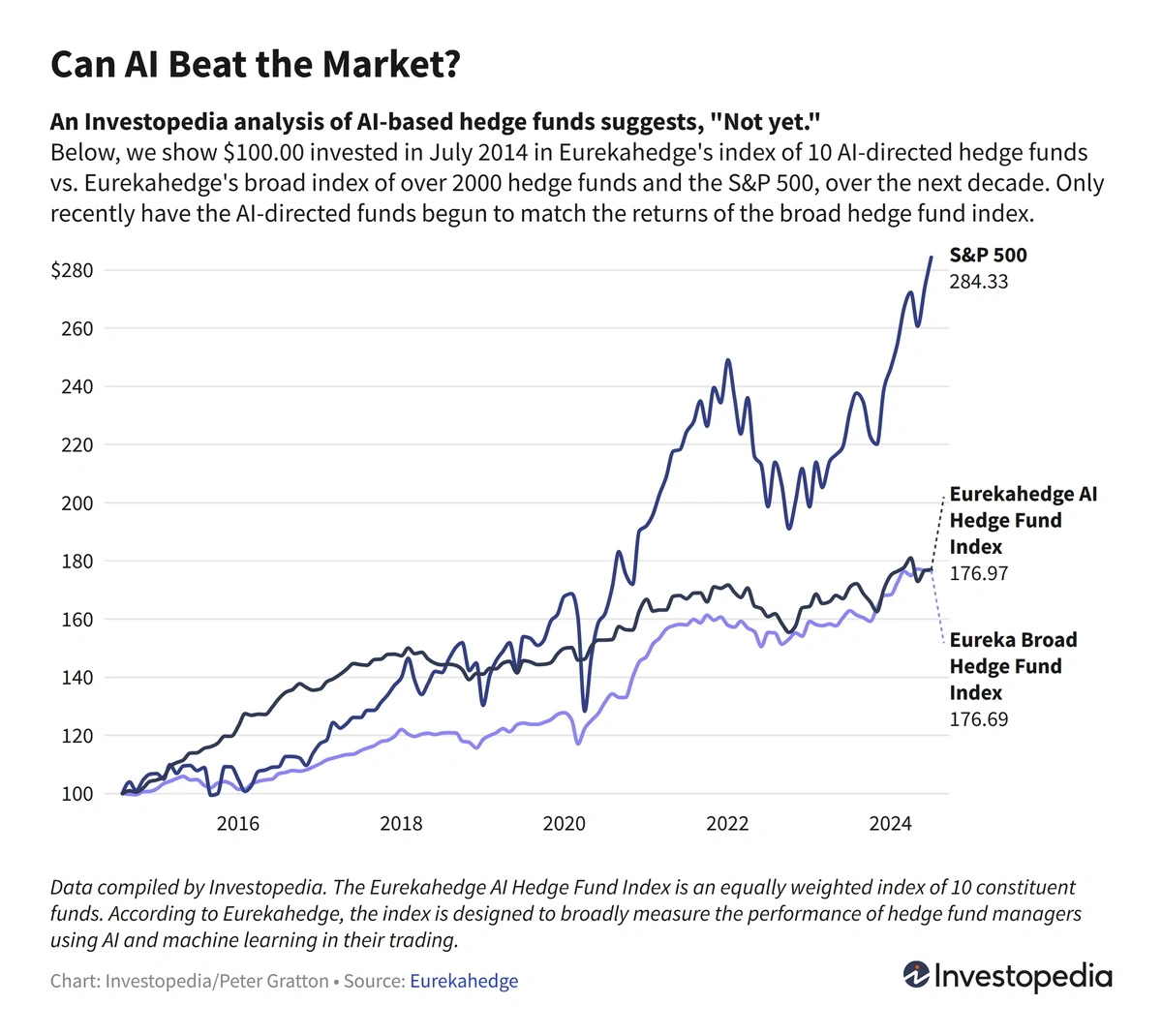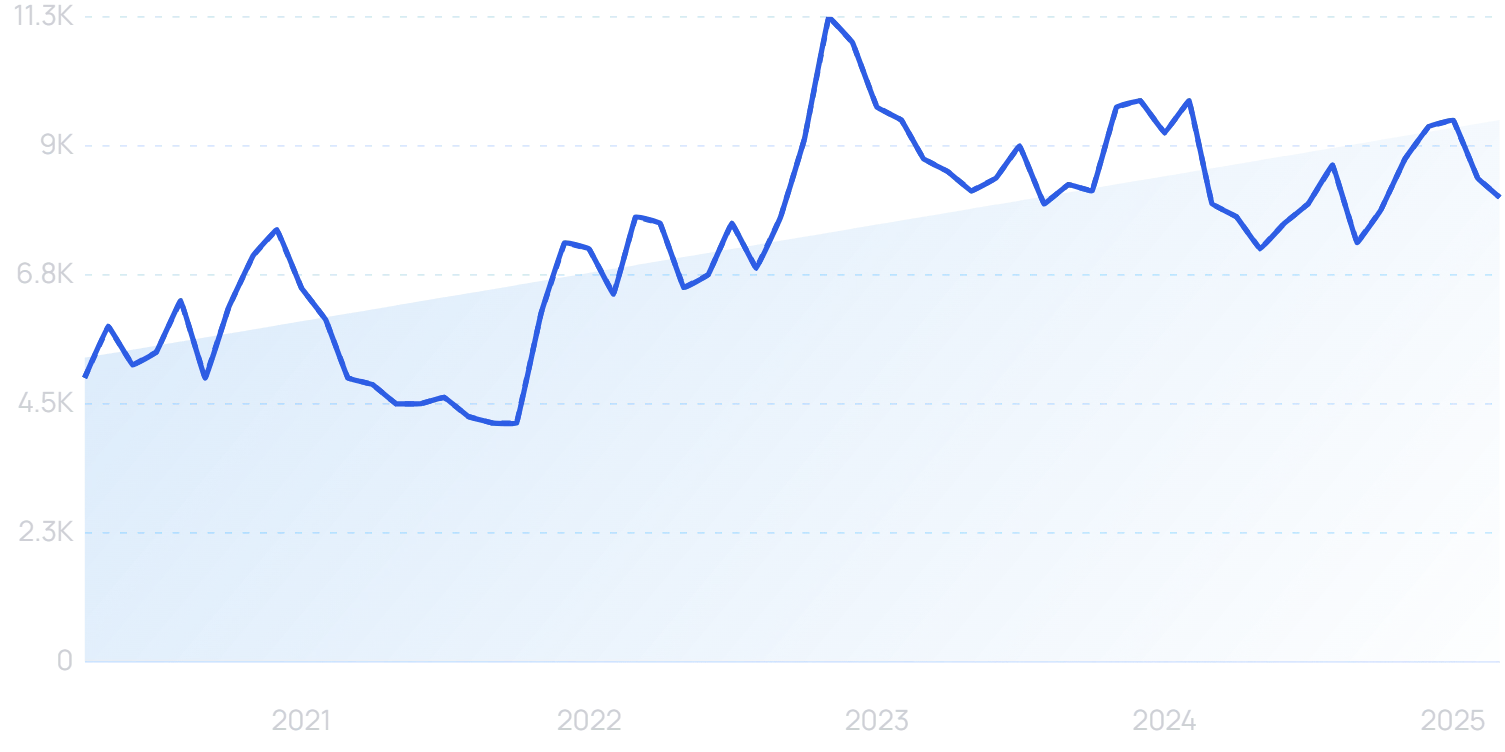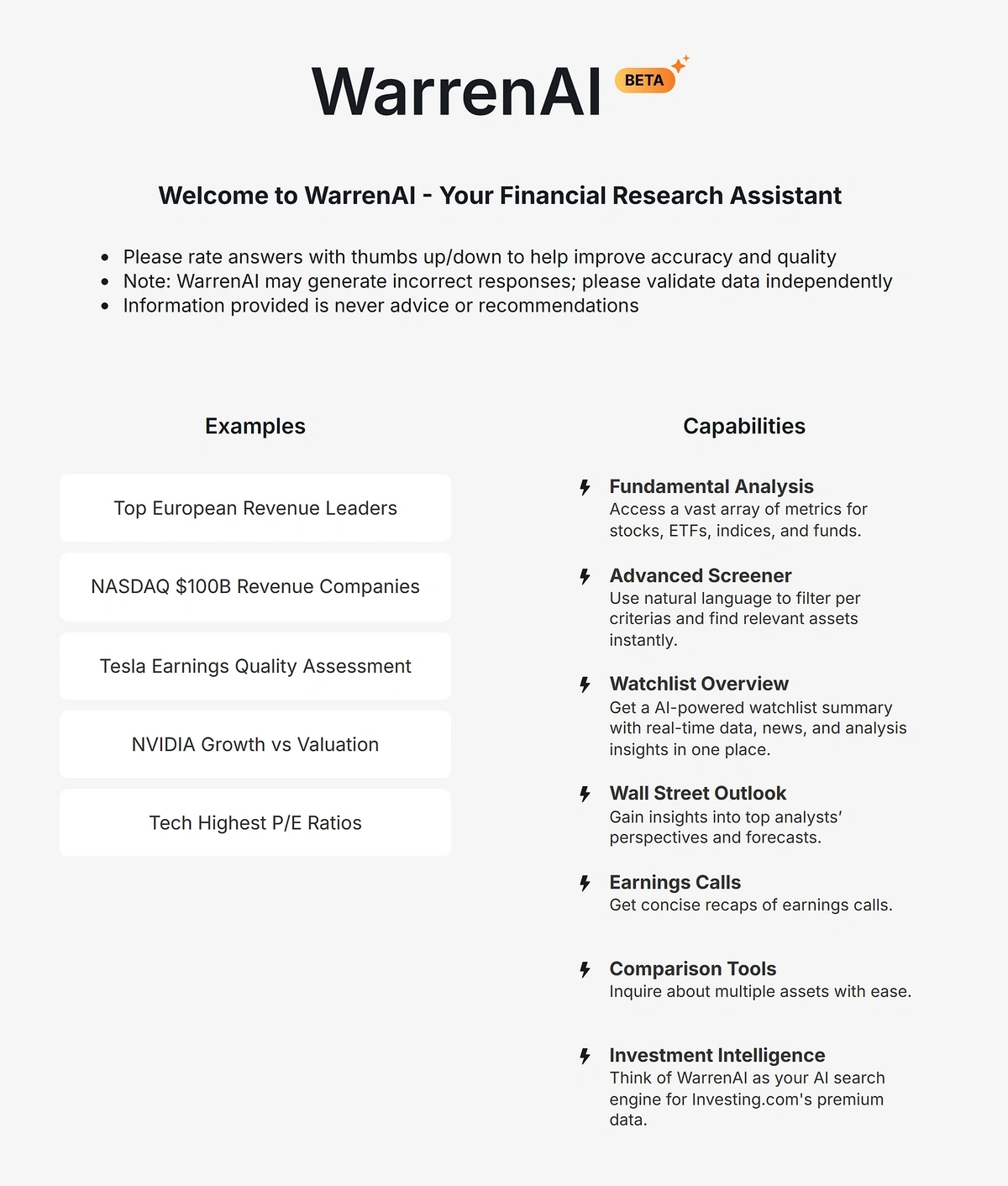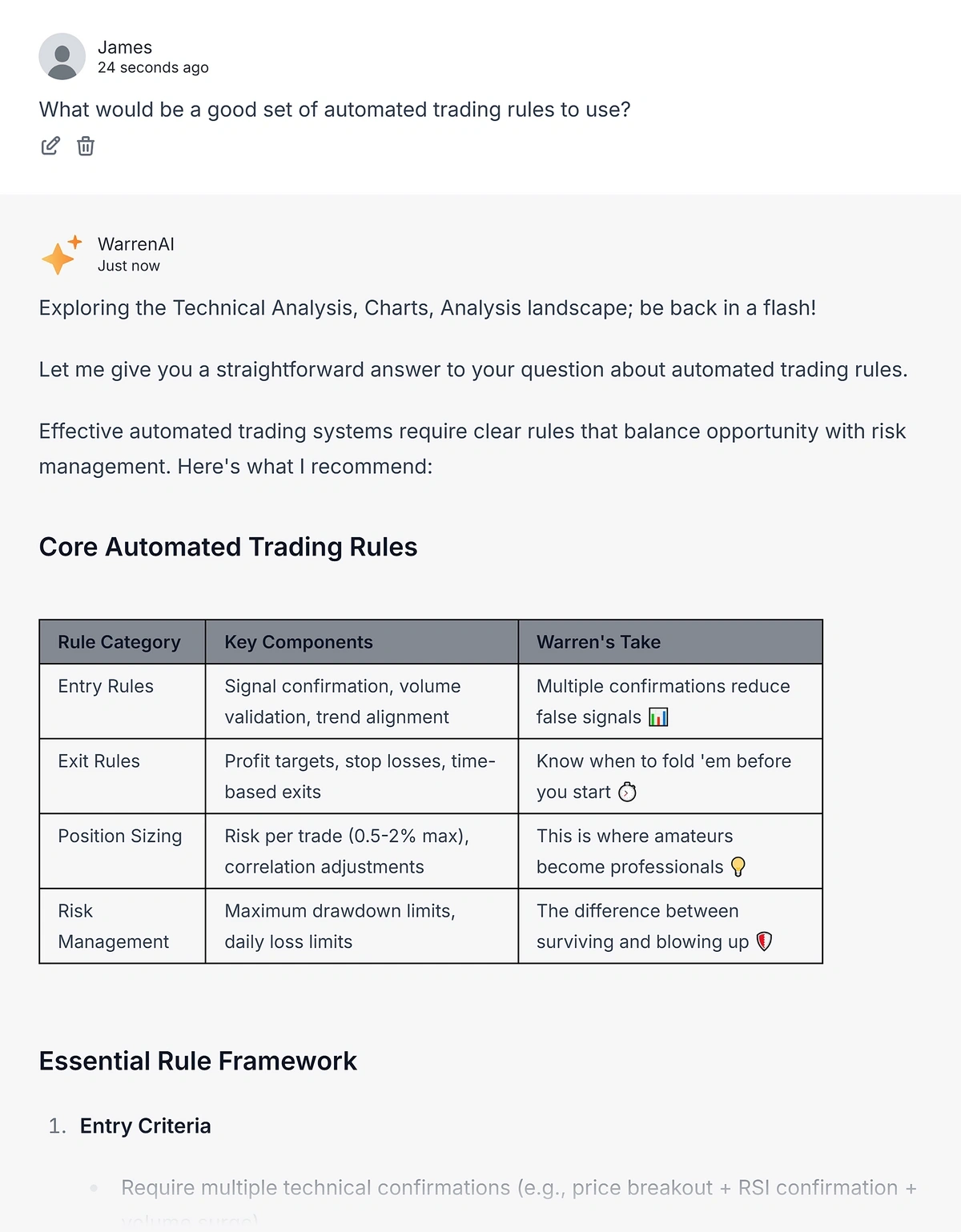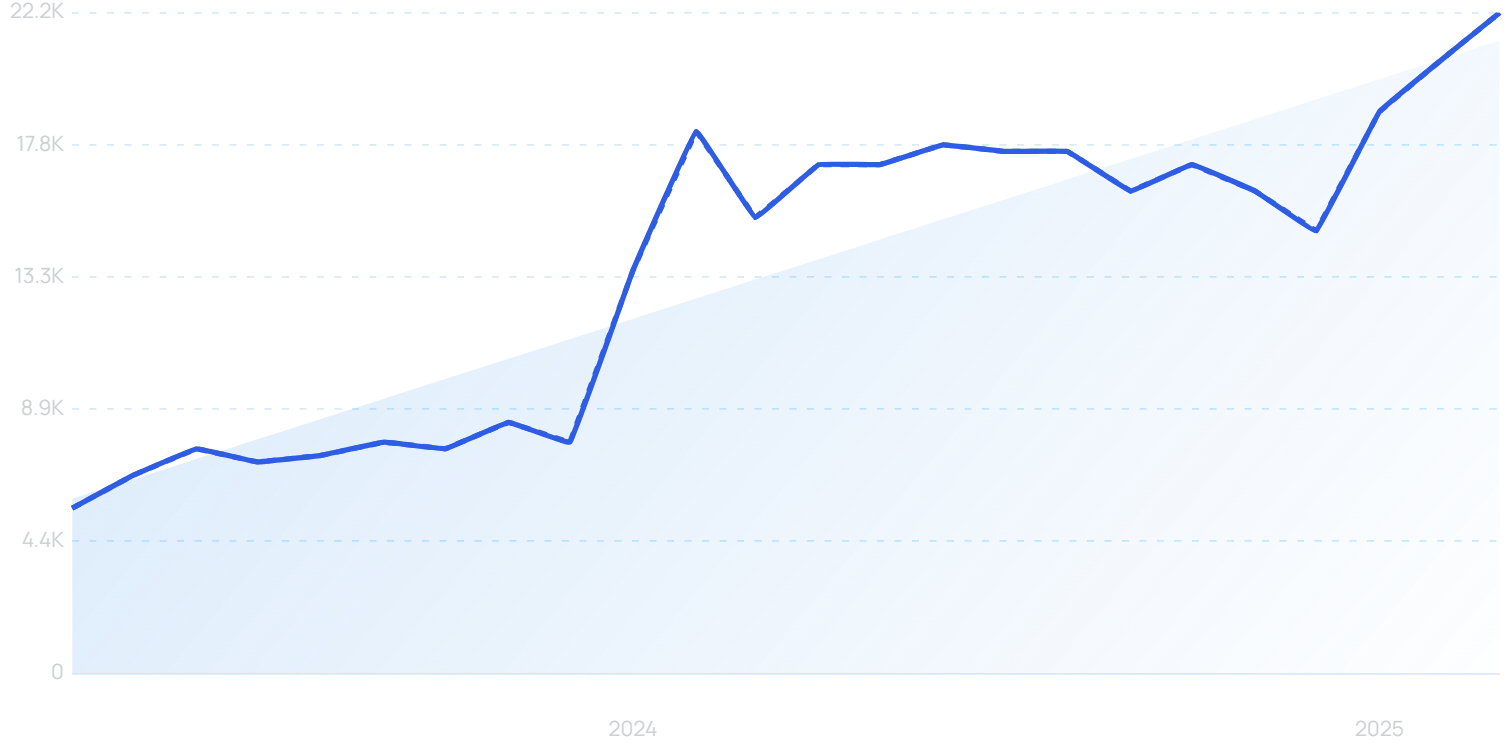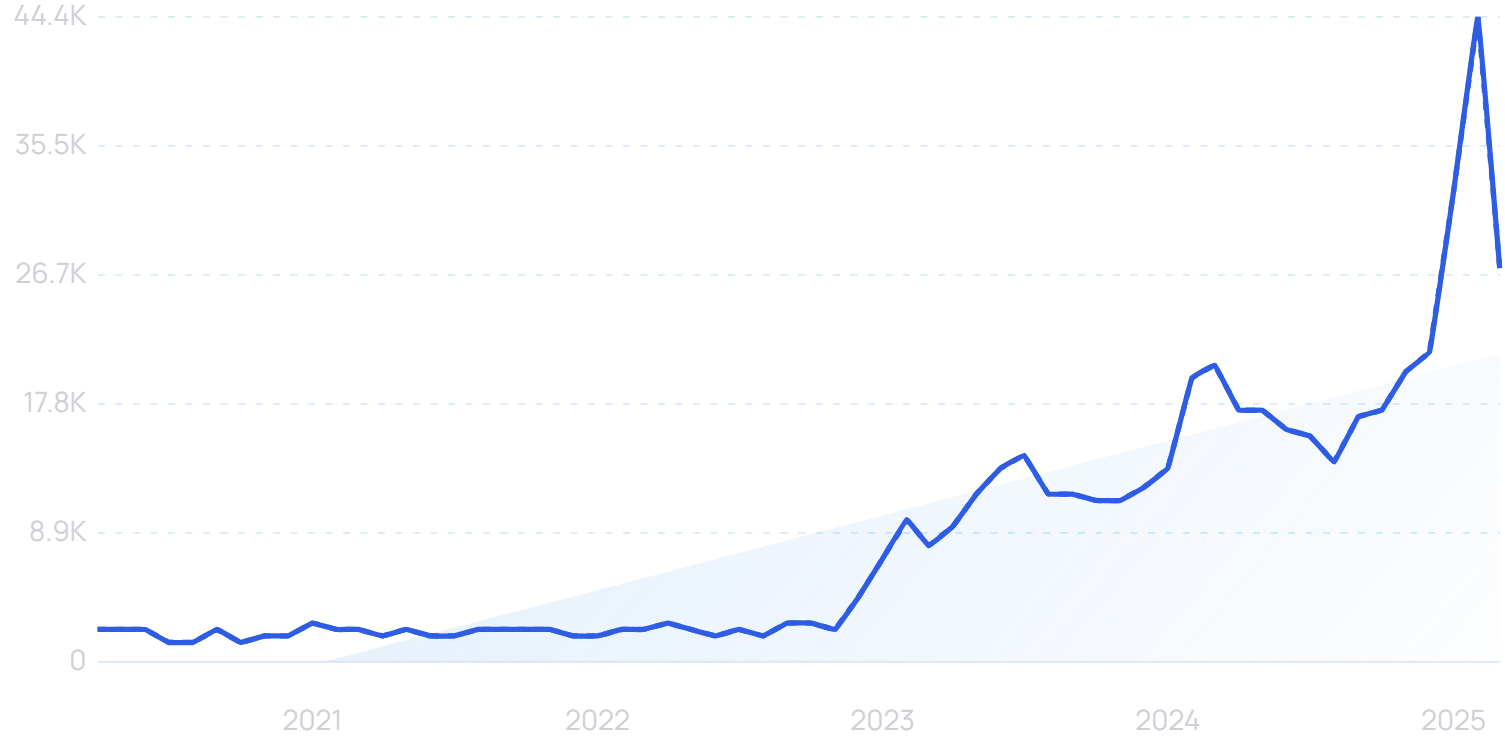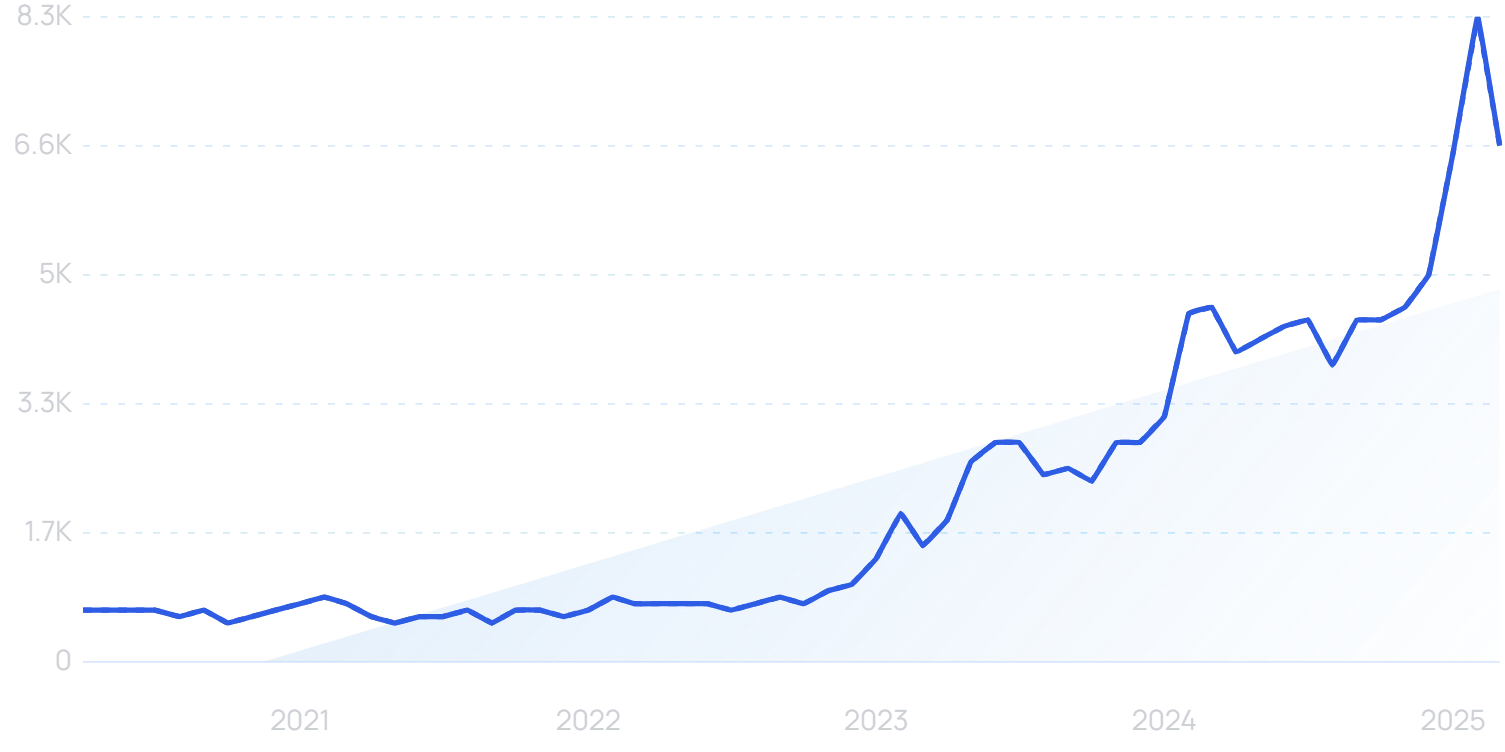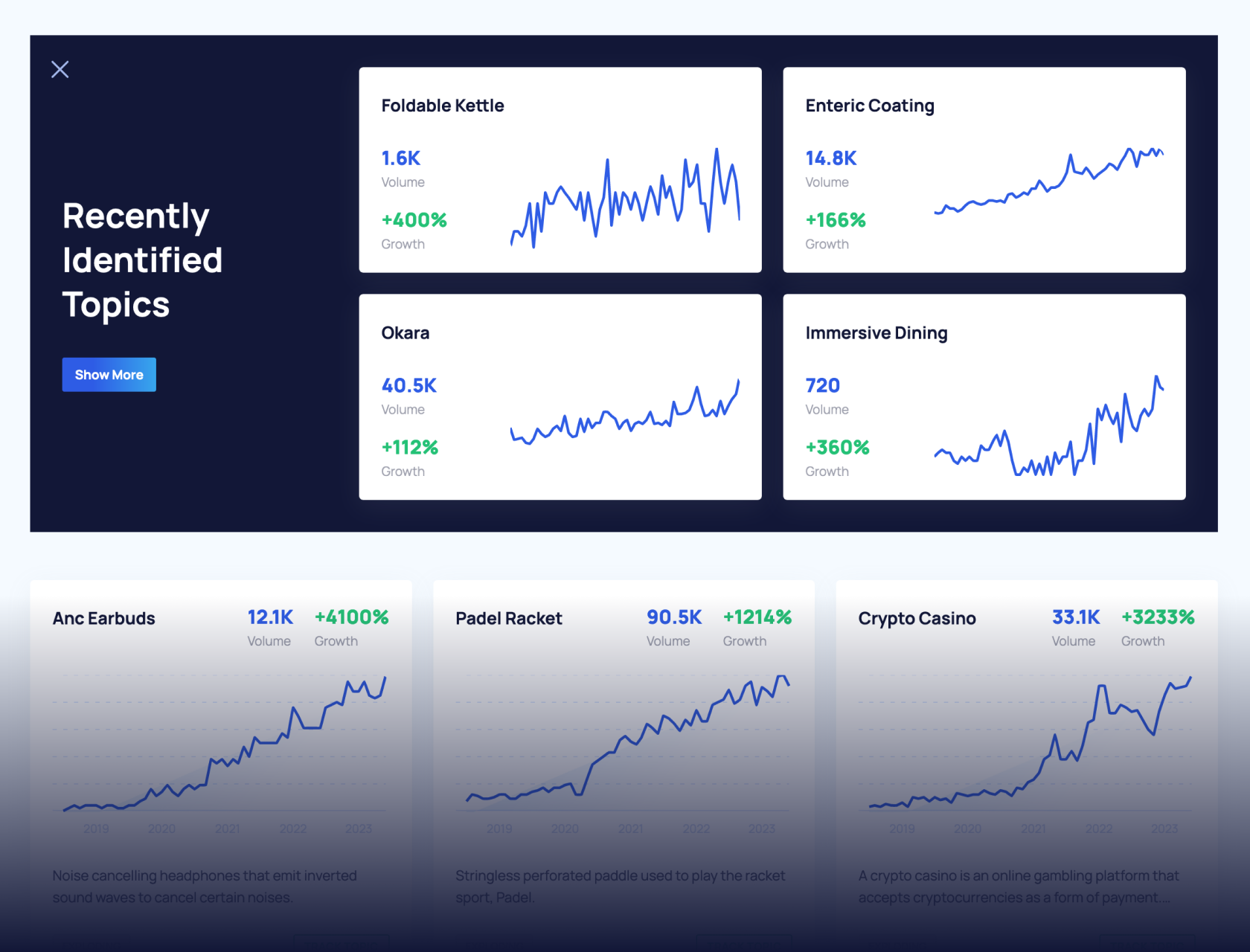
Quant fund searches up 1150% in 5 years as AI investing pushes new boundaries
Quant fund searches have increased by 1150% in the past five years, Exploding Topics and Semrush analysis has found.
This comes as AI fuels a surge of interest in tech-driven investment strategies.
Half a decade ago, “quant funds” attracted barely 100 searches per month. But that number spiked above 5000 at one stage last year.
While interest has settled down again, it remains well above where it was in 2020, at a time when quant funds were primarily the realm of industry professionals.
Quant Funds On The Rise
Quant funds are among the most influential phenomena you might only recently have heard about. They account for 35.1% of US stock market value.
“Quant fund” searches are up 1150% in the last 5 years.
In other words, shares worth almost $11 trillion are held in quant funds. These investment vehicles are fundamental to understanding modern-day Wall Street.
What is a quant fund?
A quant fund is an investment fund where decisions are driven entirely by numerical data.
Rather than being actively managed by a human expert, these funds make trades based on conclusions that mathematical models have drawn from input data.
Quant is short for quantitative, as in quantitative analysis. It is the opposite of “fundamental” analysis, which relies on judgment, opinion and instinct.
Of course, someone still has to build the models and execute the trades (although this latter step is often automated). But these “quants” do not exercise any personal discretion in investment decisions.
“Quant” searches are up 94% in the last 5 years.
In fact, this sort of personal discretion has become less and less common. Human-managed funds account for 24.3% of US stock market capitalization.
AI Quant Funds
Drawing actionable conclusions from big data is precisely where artificial intelligence excels.
So while quant funds have been around for some time, the surge in AI has seen parallel advances in this form of investing.
High-Flyer is the company behind DeepSeek, the Chinese AI model considered to be at the cutting edge of the field. But before it was developing that, it was using AI to run a highly successful quant fund.
DeepSeek exploded to prominence in January, with many experts blown away by its capabilities.
AI models made decisions on how to invest a $13.79 billion portfolio. I think it’s clear that the results must have been very positive to convince the company that the future lay with the development of DeepSeek, and the pursuit of Artificial General Intelligence.
Numerai is also a kind of AI quant fund. It crowdsources the development of models that can predict the stock market, rewarding data scientists who contribute by giving them cryptocurrency payouts.
Numerai challenges data scientists to produce novel market-predicting AI models.
More than 3,900 models have been submitted. The total value of payouts to data scientists exceeds $21.3 million in Numeraire (NMR), Numerai’s proprietary token.
Quantiacs works on a similar basis, although it does not amalgamate individual algorithms into one AI mega-model like Numerai.
Instead, the top seven best-performing AI models within individual contest periods each get tried out in the real world.
Quantiacs assigns $2 million between them, with the developers guaranteed a share of any profits made.
Algorithms that perform well in Quantiacs contests then get real money assigned to them, with 10% of the profits going to the creators.
Quantiacs makes its leaderboards public, so it is easy to see how the algorithms are performing. For the February-May 2025 contest, all models that were allocated money are currently in the green.
Build a winning strategy
Get a complete view of your competitors to anticipate trends and lead your market
AI takes quant mainstream
While AI has the potential to supercharge quant funds, it also makes quant concepts far more accessible to the masses.
The role of a quant and the benefits of AI have some obvious overlap, namely when it comes to probing large data sets and surfacing insights.
The proliferation of AI theoretically makes the USP of a quant fund less pronounced.
Quant funds have a head-start. They have been using AI technology for a comparatively long time, and specializing it through tailored prompt engineering.
“Prompt engineering” searches are up 5900% in the last 5 years.
But with AI now so widely available, it is a matter of time before retail investors and active fund managers become direct competitors, something that quants themselves are acknowledging.
For instance, Capitalise.AI allows users to design automated trading rules using only natural language prompts, with no need for any coding.
Examples of trading rules that can be set up on Capitalise.AI.
Investors set up rules for when they want to enter and exit certain positions. The platform then simply follows those rules, without requiring further input — effectively operating like a quant fund, but for individual investors.
“Capitalise AI” searches are up 43% in the last 2 years.
In this case, users are not aided by AI in setting their initial trading rules, which is where established AI funds are still likely to hold an advantage.
But the Capitalise platform at the very least removes technical barriers to quant trading.
AI Investing Boom
There is huge and growing mainstream interest in how AI can be applied to investing.
“AI investing” searches are up 335% in the last 2 years.
While shorter-term search trends for quant funds are actually down, more accessible terms like “AI investing” are shooting upward.
Growing interest in quant funds effectively served as a signal for the bigger trend coming down the road.
Private and crowdsourced AI quant funds are now reasonably well-established. But there is a scramble to find other ways in which maturing artificial intelligence technology can be used as an investing tool.
Want to Spy on Your Competition?
Explore competitors’ website traffic stats, discover growth points, and expand your market share.
Does AI investing outperform humans?
The (multi) million dollar question when it comes to AI investing is whether the technology is at a point where it can outperform human traders. For now, the answer is inconclusive, or perhaps a very tentative “no”.
Investopedia has tracked the performance of hedge funds against AI-directed funds for the past 10 years. $100 invested in each back in July 2014 would have returned near-identical amounts by now.
The difference in 10-year returns between hedge funds and AI-directed funds has been negligible.
Even so, a conclusion that AI can more or less match the performance of hedge fund managers would still be significant.
The data doesn’t yet prove as much, but it certainly suggests that artificial intelligence can have a real role to play in investing decisions.
Another study found that stock return predictions made by AI actually surpassed those of most industry analysts. That only changed in areas where “institutional knowledge” was particularly important, in which case human traders regained the edge.
AI investing tools and methods
AI investing is a very broad term, and can take many different forms. Currently, much of the innovation is in AI assistants (or “robo-advisors”) that can assist human traders.
At the most “basic” level, the standard, unaltered form of ChatGPT can be a useful tool for investors.
(It’s remarkable to be calling this basic, but that just reflects the speed with which AI has come into the mainstream.)
A 2024 study found a positive correlation between ChatGPT-4 “attractiveness ratings” and future stock returns. An investment strategy based on the stocks deemed most attractive by the AI model yielded positive returns.
But more specialized AI investing tools are also starting to spring up.
Magnifi provides users with AI that will analyze their existing portfolios. It also serves as a conversational assistant to answer questions and talk through any potential investments.
“Magnifi” searches are up 55% in the last 5 years.
Users can link their other investment accounts to Magnifi to receive across-the-board AI advice. As of June 2024, Magnifi users had linked accounts containing more than $2 billion in assets.
Investing.com recently created WarrenAI.
Warren.AI is a robo-advisor from Investing.com.
Using 10 free queries upon sign-up, I asked it for a “safe stock” recommendation for 2025. It did not immediately return a direct answer, but suggested some criteria to help define a safe stock:
- Debt-to-Equity ratio below 0.5
- Dividend yield between 2-5%
- Market cap above $10 billion
- Beta below 1.0
- Consistent revenue growth over 5+ years
I then fed those criteria into the AI, and it returned a few stocks it considered to be close matches.
Coming with a disclaimer that this did not constitute financial advice, it mentioned Johnson & Johnson as the best fit, while also referencing Philip Morris, McDonald’s, and Dell.
The next step in AI investing is tools that will simply run automatically.
There is some understandable reticence about simply handing over a sum of money to an AI model and letting it call the shots.
One UK survey found that just 7% of investors would feel comfortable fully relying on AI.
Sure enough, entirely automated investment tools like this are yet to hit the mainstream market. But it’s not hard to imagine such trading bots: use a robo-advisor like WarrenAI to select your automated trading rules on a platform like Capitalise.AI, and you’re most of the way there.
An excerpt from the answer WarrenAI gave me when I asked for some good automated trading rules.
But with all robo-advisors keen to stress that they are not giving financial advice, full AI investing still feels some way off. Even so, it’s certainly something to watch.
Risks Of AI Investing
All investing comes with inherent risk. AI investing is no different, in the sense that stocks picked out with the assistance of artificial intelligence can go down in value as well as up.
Nor is the technology infallible. “Hallucinations” still occur — and working off a completely fabricated basic assumption could have disastrous consequences for investments.
“AI hallucination” searches are up 285% in the last 2 years.
There might also be some bigger-picture risks involved in wider adoption of AI investing.
In particular, a proliferation of AI models working off the same input data and generating automatic trades could lead to “crowding”.
In essence, a vast number of traders could end up buying and selling the same stocks at the same time because that is what the data suggests is most prudent. That could lead to high volatility, which could ironically then make the AI models far less reliable.
Investing In AI
AI investing can also refer to investing in AI.
Searches for “investing in AI” have grown 1020% over the last 5 years.
This is really at the other end of the spectrum to quant funds.
It’s using fundamental (not quantitative) analysis to determine that AI is a high-growth area, and one that is therefore worth backing in the stock market.
But ultimately, investing in AI is driven by the same motivation as using AI to invest. Traders have spotted the growing sophistication and prominence of the technology, and want to use it to their financial advantage in one way or another.
Individual stocks like NVIDIA have proved a popular way of gaining exposure to the artificial intelligence boom. Meanwhile, there is a growing number of curated AI funds.
“AI fund” searches are up 988% in the last 5 years.
These funds bundle together stocks that are considered likely to grow alongside the demand for AI.
For instance, the Sanlam Global Artificial Intelligence Fund has the largest individual percentage of its assets invested in NVIDIA, while also holding positions in Alphabet, Amazon, Intuitive Surgical, Tesla and 36 further companies.
It returned a 26.39% yield in 2024. The previous year, it was 37%.
Prepare Yourself For An AI Future
There is no point shying away from AI. It is already making a huge impact across a wide variety of sectors, and the investing space is no different.
From AI-powered quant funds to robo-investors, the technology can already help you in many tangible ways. Proceeding with caution is sensible, but getting left behind is not.
If you’d like to become more efficient, effective and creative, then now is the time for you to embrace the power of AI. You'll be amazed at the difference it can make.
Stop Guessing, Start Growing 🚀
Use real-time topic data to create content that resonates and brings results.
Share
Newsletter Signup
By clicking “Subscribe” you agree to Semrush Privacy Policy and consent to Semrush using your contact data for newsletter purposes
Written By


James is a Journalist at Exploding Topics. After graduating from the University of Oxford with a degree in Law, he completed a... Read more

